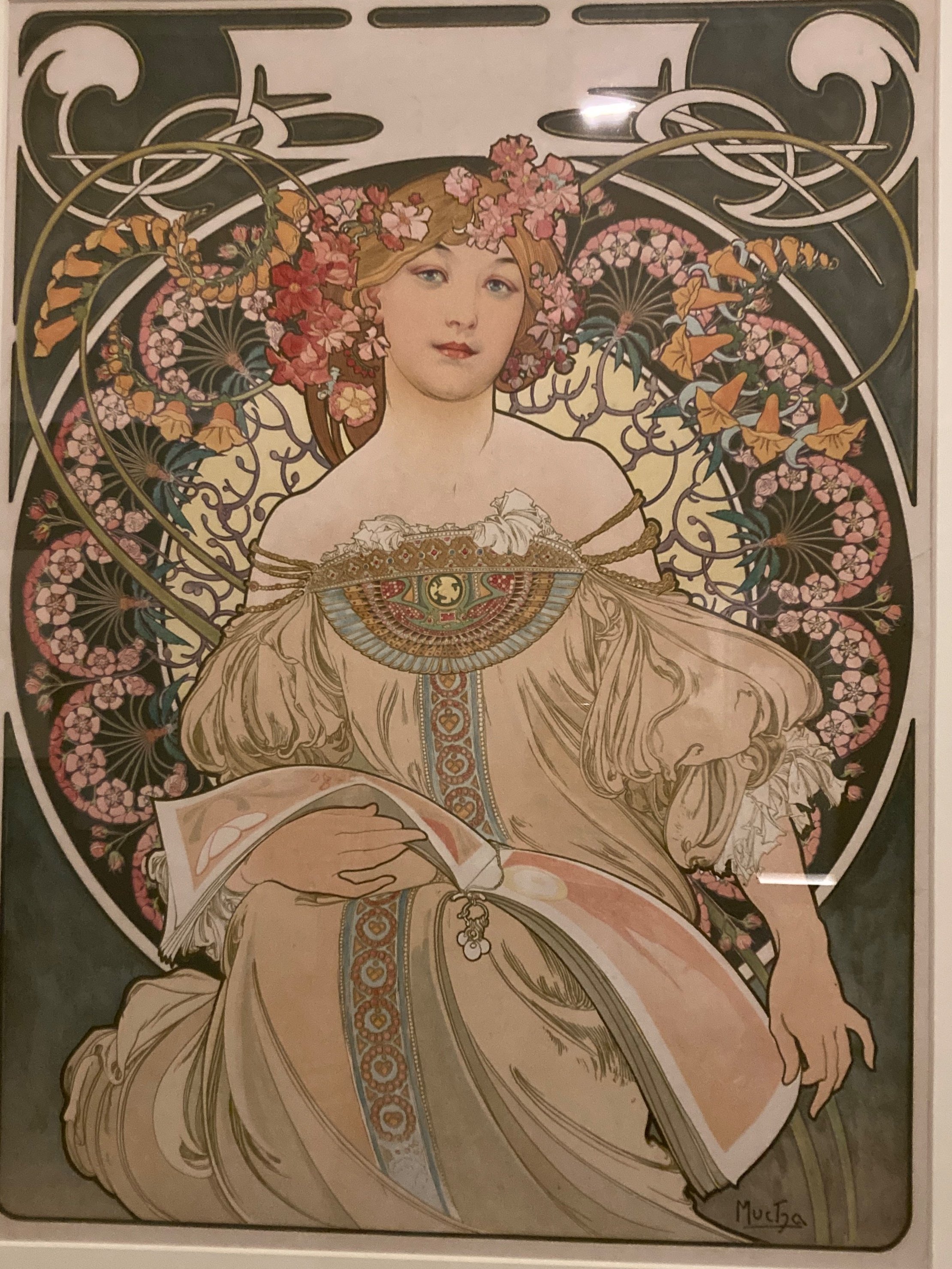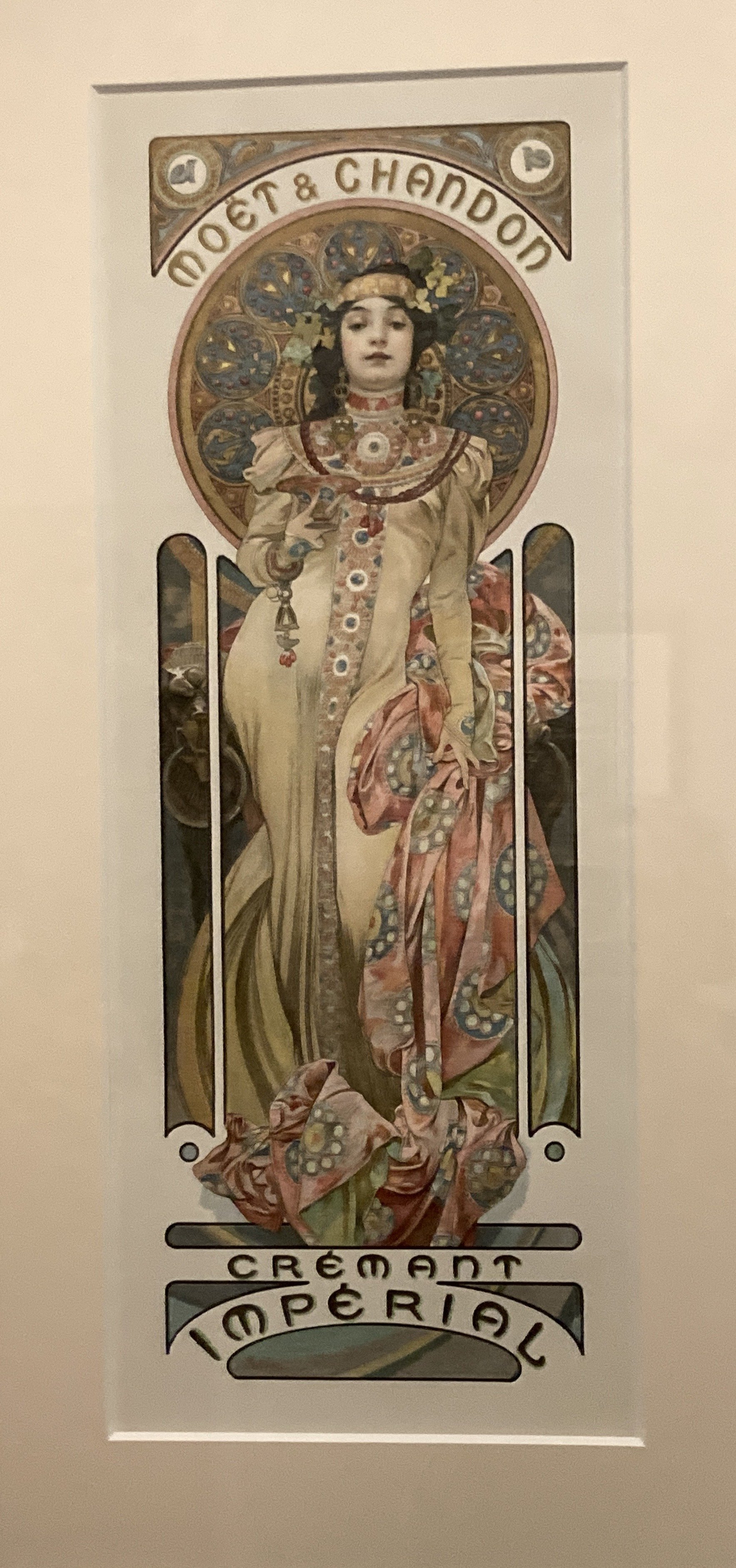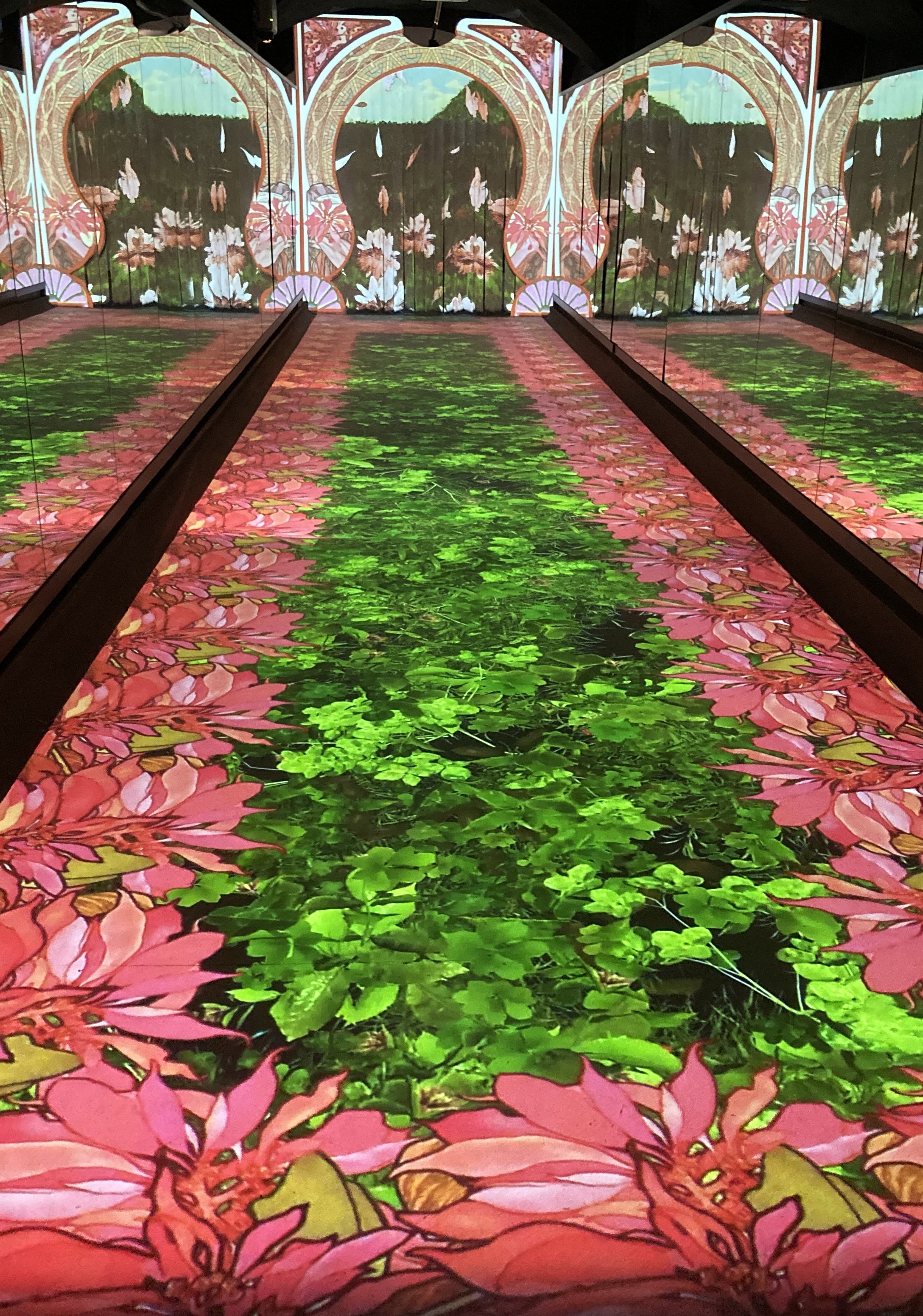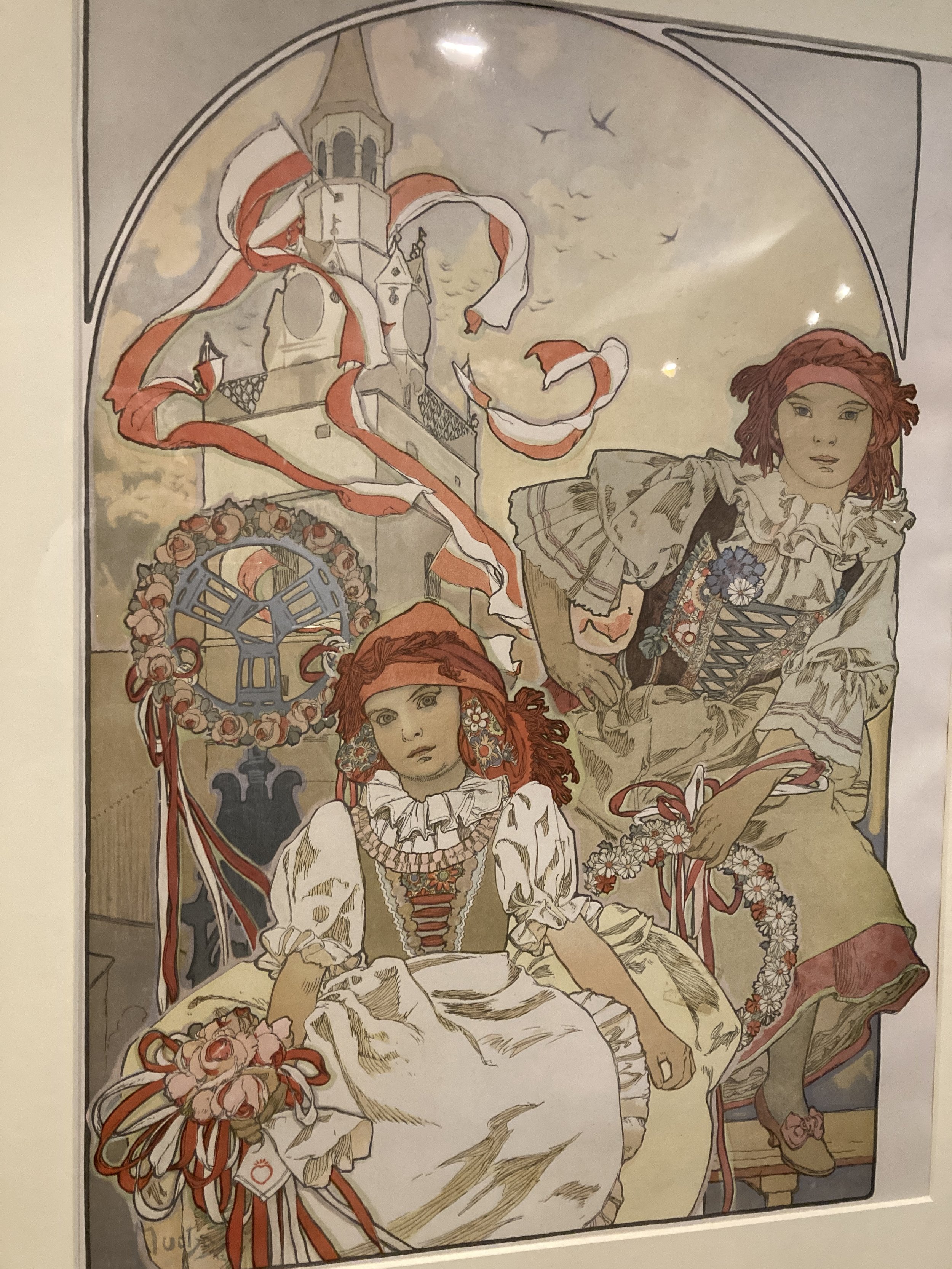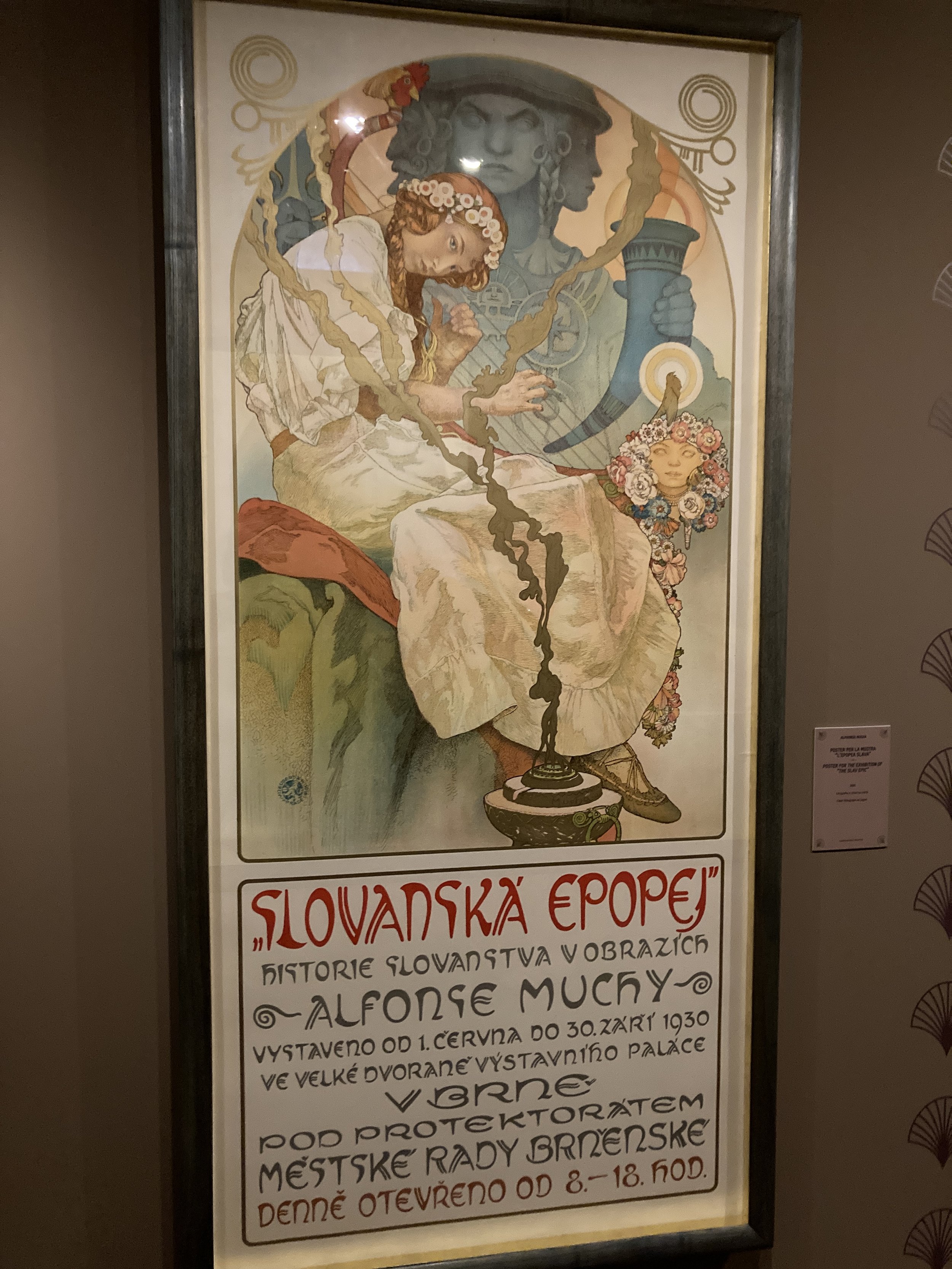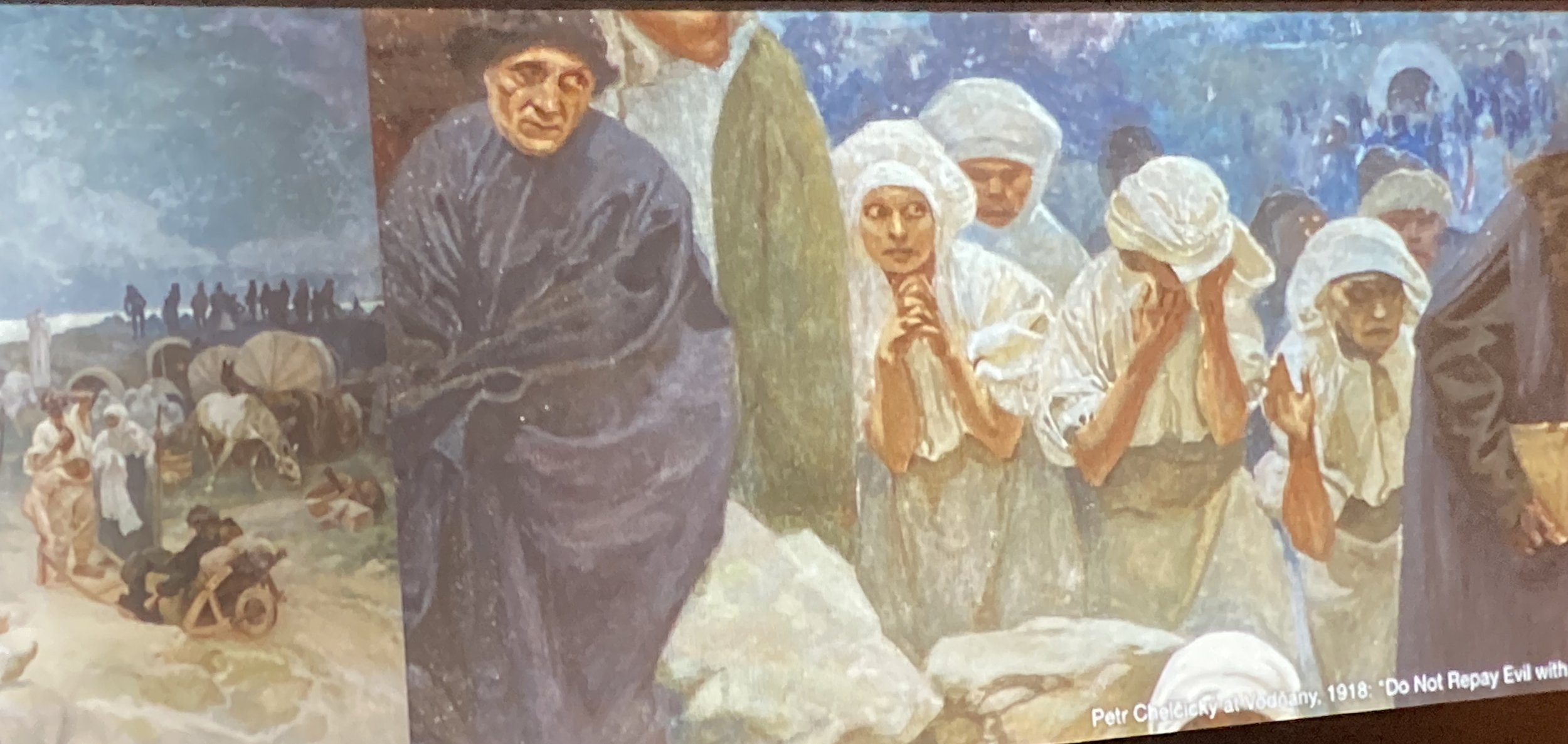Art Nouveau in Florence
Classic art is everywhere in Florence. It’s there in intimate chapels and majestic cathedrals, in museums small and large, in civic buildings and Medici palaces. Outside there are fountains, sculptures, fabulous doors, and art tucked above doorways. It is impossible to be in Florence and not encounter classic art.
In addition to the classics, it is not unusual to find more contemporary art in the city, both in galleries and as temporary exhibits. One such exhibit, currently on display in the museum of the Ospedale degli Innocenti, features the works of Alphonse Mucha.
Mucha worked in Paris in the years just before and after 1900 - the Art Nouveau period. He worked primarily as an illustrator and graphic designer but also with photography, painting, and jewelry design. He remains one of the most influential and well-known Art Nouveau artists (though he never described himself with that label).
Mucha created theater posters and programs, magazine and book illustrations, and advertising designs. His work from that period include the many theater posters he designed for plays starring Sarah Bernhardt.
A Mucha illustration advertising beer
Women are the subjects of Mucha’s illustrations - young, flawless, and dressed in beautiful clothing. No classic goddesses here - these are lively and sensuous ladies.
Mucha surrounds his female subjects with arches, circles, and curves. Flowers appear in many ways – in the background, as hair decorations, and as intricate border designs. The colors are beautiful, - soft, warm, complex, floral.
The exhibit in Florence has several components, including multimedia experiences. At the beginning is a short film, in Italian with English subtitles, plus a timeline. Together, they set the stage for viewing Mucha’s work.
The poster display begins with his Bernhardt theater posters – large works with fabulous costumes unique to each play.
Moving through the exhibit you find advertising posters, other forms of advertising (perfume bottles, boxes, menus, fans), and decorative posters.
One fascinating part of the exhibit is an immersive experience. A long hallway, flanked by mirrors, filled with ever-changing projections of Mucha’s floral designs. The flowers shift and change creating explosions of color. At the far end are large projections of his works. It’s a visually beautiful experience that puts the viewer right in the middle of a Mucha illustration. (I’ll post a short video clip on the Two Parts Italy Facebook page).
Not all of Mucha’s works were of beautiful and serene women dressed in alluring clothing. His posters also reflect his commitment to all Slavic peoples, their customs and their struggles.
Mucha considered his most important work to be his Slav Epic, a series of huge paintings telling the history of the Slavic people. The project was completed over 18 years and then donated to the city of Prague.
Panel from the Slav Epic
Mucha’s political beliefs, commitment to the independence of the Slavic people, and participation in the Czech Freemasons led to his arrest by the Nazis in 1939. He was in his 70’s at the time of his arrest and, even though he was released after a few weeks, he died of pneumonia shortly after. The Nazis also removed his Slav Epic works and they remained hidden for many years. They are now on display in Prague. Reproductions of several panels are included in the exhibit in Florence.
The Mucha exhibit will be in Florence through April 7, 2024. The museum is open daily from 9:30 am to 7 pm with some exceptions (be sure to check on-line for changes to this schedule). A not-to be-missed experience for those who are interested in Art Nouveau.
